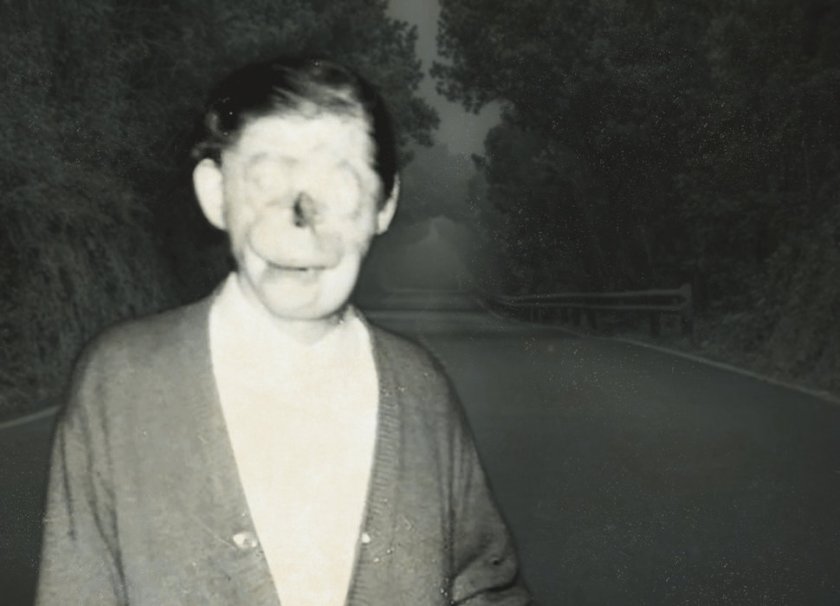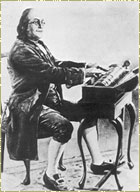Ghosts of Chernobyl
How a failed reactor design and human error led to one of the worst nuclear disasters in history and a score of countless tales about creepy happenings and paranormal events.
I’m aware that many of our listeners/my readers might not know what I’m talking about so in an effort to bring as much enlightenment as possible, I found this article about the disaster. It was truly horrifying and many lives were lost/affected by the Chernobyl meltdown. I was only 5 when it happened, but I remember sitting in front of the television and watching the story about the disaster unfold.
Chernobyl in the news
http://news.bbc.co.uk/onthisday/hi/dates/stories/april/28/newsid_2500000/2500975.stm
1986: Soviets admit nuclear accident
The Soviet Union has acknowledged there has been an accident at the Chernobyl nuclear power plant in Ukraine.
The report, from the official news agency, Tass, said there had been casualties but gave no details of numbers. It said aid was being sent to the injured.
The report said that one of the reactors had been damaged in the accident, but gave no further details beyond saying that measures were being taken to “eliminate the consequences of the accident”. It also claimed the accident was the first at a Soviet power station.
The report was the first confirmation of a major nuclear catastrophe since monitoring stations in Sweden, Finland and Norway began reporting sudden high discharges of radioactivity in the atmosphere two days ago.
Meltdown
The accident is believed to be the most serious in the history of nuclear power, worse even than that at the Three-Mile Island power station in the United States in 1979 when there was some release of radioactivity but nobody was injured.
The Chernobyl nuclear power plant, just north of Kiev, consists of four nuclear reactors, known as light-water-cooled, graphite-moderated reactors – a type hardly used outside the Soviet Union.
Nuclear experts say the levels of radioactivity recorded indicate that the nuclear core of the damaged reactor may have melted down.
Full-scale alert
The number of casualties, both immediately and in the future, from radiation sickness, is expected to be high, although the exact number may never be known. It is not believed, however, that there is any risk to the health of anyone outside the Soviet Union.
The discharge of radioactivity was so great that by the time the fallout reached Sweden, 1,000 miles away, it was still powerful enough to register twice the natural level of radioactivity in the atmosphere.
The sudden jump in radioactivity levels was enough to prompt a full-scale alert in Sweden, which initially believed the accident had happened at its own nuclear power station, on the Baltic coast. The evacuation of 600 workers had been ordered before experts realized that the source of the radioactivity must have been within the Soviet Union.
The Facts
- Chernobyl remains the world’s worst civil nuclear disaster.
- It emerged that design flaws had led to a power surge, causing massive explosions which blew the top off the reactor.
- Estimates of the numbers affected vary tremendously. A report in 2005 by the Chernobyl Forum, set up by a number of bodies including the World Health Organisation, the UN and governments of Belarus, the Russian Federation and Ukraine, concluded that fewer than 50 people, most of them workers at the plant, died as a result of exposure to radiation. Most of them died immediately after the disaster, but some survived until as late as 2004.
- The forum estimates up to 9,000 people could eventually die from radiation exposure – although Greenpeace claims the figure could be much higher, up to 93,000.
- The contamination spread across neighboring Belarus, and into Europe. In north Wales, sheep on some 350 farms still have to be tested for radiation before their meat can be eaten.
- A concrete sarcophagus was hastily built to cover the damaged reactor, but it is weakening over time. It is due to be replaced in 2007.
- Chernobyl continued to produce electricity for another 14 years until international pressure forced its closure in 2000.
- An official exclusion zone around the plant remains in place, extending for 30 kilometers (18 miles). It is one of the most radioactive spots on Earth.
The village of Pripyat in Ukraine is now a ghost town, flooded with varying degrees of toxic radiation, but it was founded in February of 1970 as a nuclear city (a type of closed city and the ninth of its kind) for workers who were employed at the Chernobyl power plant. It was officially proclaimed a city in 1979 and the population was estimated to be almost 50,000.
In April of 1986, the residents of Pripyat were told to board buses leaving the affected area around the plant but were not told when or if they would be returning. Residents were told to leave all non-essential items and to board quickly. As the buses filled, musical and acting troupes performed to distract the residents from what was actually happening. The military presence instructed the performers that they were not to speak to anyone at all. Only to entertain. They danced and sang. One musician who was present reported that a ballerina twirling for onlookers slowly lost her hair and blood began to run from her ears and nose. Children ran to her, bringing flowers and were missing all of their hair and their teeth. A generator stalled and, for just a moment, the musician could see the forms of the children and the flowers they offered glowing in the dark. By the time government authorities and officials publicly recognized what had happened, most residents of Pripyat had been exposed for 36 hours or more.
The residents of Pripyat would never return to their homes. As a result, Pripyat retains an otherworldly feeling that you are not alone. Books are left open on school desks, dolls are arranged for tea parties never to be continued, dishes remain in the cupboards, and television sets sit silent and unobserved in fully arranged living rooms. Of course, Pripyat is not a place for the living. It’s no wonder that so many ghostly tales permeate this part of the world.
Ghosts of Chernobyl
Many stories have circulated about the villages surrounding the now-shuttered power plant. It’s no surprise to me that ghost stories have risen from the ashes of the Chernobyl disaster.
Andrei Kharsukov, a nuclear physicist from New York, said he went to the power station at Chernobyl in 1997 at around 7:30 in the morning. He went to reactor 4, the location where the explosion occurred in 1986. He was taking radiation readings of the site with a Geiger counter when he heard someone screaming from inside reactor 4. They said there was a fire and they needed someone to help them. Kharsukov stated, “I ran upstairs to tell someone, but they said that when I entered the reactor control room, I was the first person to open that door in three years, and the only way to get inside the old reactor is through the doors I came in through. If someone had gone inside the reactor when I was not looking, they would have tripped an alarm that goes off when the reactor door is opened mechanically.
The reactor door requires a password and a handprint, yet someone, or something, was inside. Later that evening, as we were eating dinner outside the building by the river next to the plant, a flood light turned on in the room of the installation. There was no way anyone could be inside. As we ate, we figured there was a power surge or something. Then just as my colleague said that the light turned off.”
Some survivors of the Chernobyl disaster recalled seeing a large, winged creature with glowing red eyes in early April, shortly before the meltdown. It was known as the Black Bird of Chernobyl. Apparently, the creature has been compared to America’s Mothman. You might have heard stories about a huge winged creature with glowing eyes being seen in Point Pleasant, WV shortly before the Silver Bridge collapsed. 46 people died and witnesses reported seeing a large black winged figure just prior to the bridge fail. Survivors of Chernobyl said they saw the creature flying away from reactor 4 and that reports of the bird ceased after the meltdown. Some claimed that the creature people were seeing was not a creature at all but an alien spacecraft whose inhabitants had helped to limit the scope of the disaster. It is believed by many that the creature is a harbinger of death and destruction while others say it was just a black stork.
In Kopachi, a small village roughly 4.5 miles southwest of the plant, there is only one building standing: the elementary school. Kopachi is a popular spot for photographers and explorers who wander the old elementary school looking for the perfect shot or a paranormal happening. Many explorers have reported seeing small children ducking around corners in their periphery. When they turn to see, the shadows are gone. Obviously, a place like an abandoned elementary school is going to be creepy particularly one that was evacuated due to a nuclear meltdown, but there is a sense of unease and sadness in this place. Children’s voices have been heard calling down the dark corridors and objects sometimes move on their own.
There have also been tales of flesh-eating zombies roaming the abandoned woodlands and buildings, eating any tourists or researchers who happen to wander into the exclusion zone. A grainy video is “evidence” of a zombie tearing a man limb from limb, but it’s actually from a video game released in 2000 called S.T.A.L.K.E.R: Shadow of Chernobyl. The video was uploaded to YouTube as “proof” of the existence of zombie-like creatures ravenous for flesh due to the meltdown of reactor 4, but it’s absolutely not real.
There’s a great segment on a show called Destination Truth where they go into Pripyat and stay the night in order to investigate reports of ghostly figures roaming the area. Reportedly, these figures resemble people who have passed away due to the disaster at Chernobyl. Host Josh Gates interviews a couple of people who have had experiences in the long-abandoned Pripyat, one a woman who was a fourth grader at the time of the disaster. She says the ghosts she has seen on her many trips to Pripyat over the years are unformed and simply resemble faceless balls of energy. The second witness claimed to have seen something similar in an abandoned hospital. During their investigation, Josh and his team experienced their thermal imaging equipment shutting down inexplicably and witness a thermal signature that resembles a human figure. It’s possible that the images caught were just reflections or other explorers wandering the ruins, but it’s hard to say. Have a watch and see what you make of what they’re seeing. I don’t want to give too much away. 😉 https://www.dailymotion.com/video/x3r9hwn
Is Pripyat a ghost town filled with actual ghosts? We might never know for sure, but there’s definitely been a lot of evidence captured that supports this idea.
Now, I don’t want you to think that every village surrounding Chernobyl is a ghost town. In fact, the town of Chernobyl, which is just over 10km from the reactor, has residents that cycle in and out at regular intervals. Nearly 5 million people live in areas that are still considered contaminated. Additionally, 180 elderly individuals have returned to their homes in the exclusion zone and refuse to leave. If you’d like more information about them, there’s an awesome documentary called The Babushka of Chernobyl. It could take another 100 years for the areas affected by the meltdown to be inhabitable, but there’s nothing to compare the Chernobyl disaster to. Nothing of this magnitude had ever happened prior to Chernobyl. It could take thousands of years for the area around the reactors to be inhabitable again. We have no way of knowing.
Your Fellow Haunt Head,
Janine
hauntheadscast@gmail.com
Tweet us @hauntheadscast
Insta: Blood Marmelade
Facebook: Haunt Heads Podcast
Our podcast intro/outro is provided by Fox and Branch






